Designers Innovate in Response to Global Interest in e-Bikes
The phrase “to soft pedal” may have to be reviewed as e-bikes experience encouraging growth. Connector developers are helping e-bike designers make these next-gen two-wheelers lightweight, rugged, and reliable.
By Caroline Hayes e-bike
In 2015, singer Katie Meluha told us that there were nine million bicycles in Beijing, which equated to one bicycle for every 2.4 residents of the Chinese capital. That was before electric bicycles hit the scene.
There are two types of e-bike. The simplest form is a pedelec, which uses conventional pedals to activate an auxiliary motor that propels the bike. Other e-bikes, electric scooters, and motorcycles do not require the cyclist to pedal and their controls (such as the throttle) are housed in the handlebars.
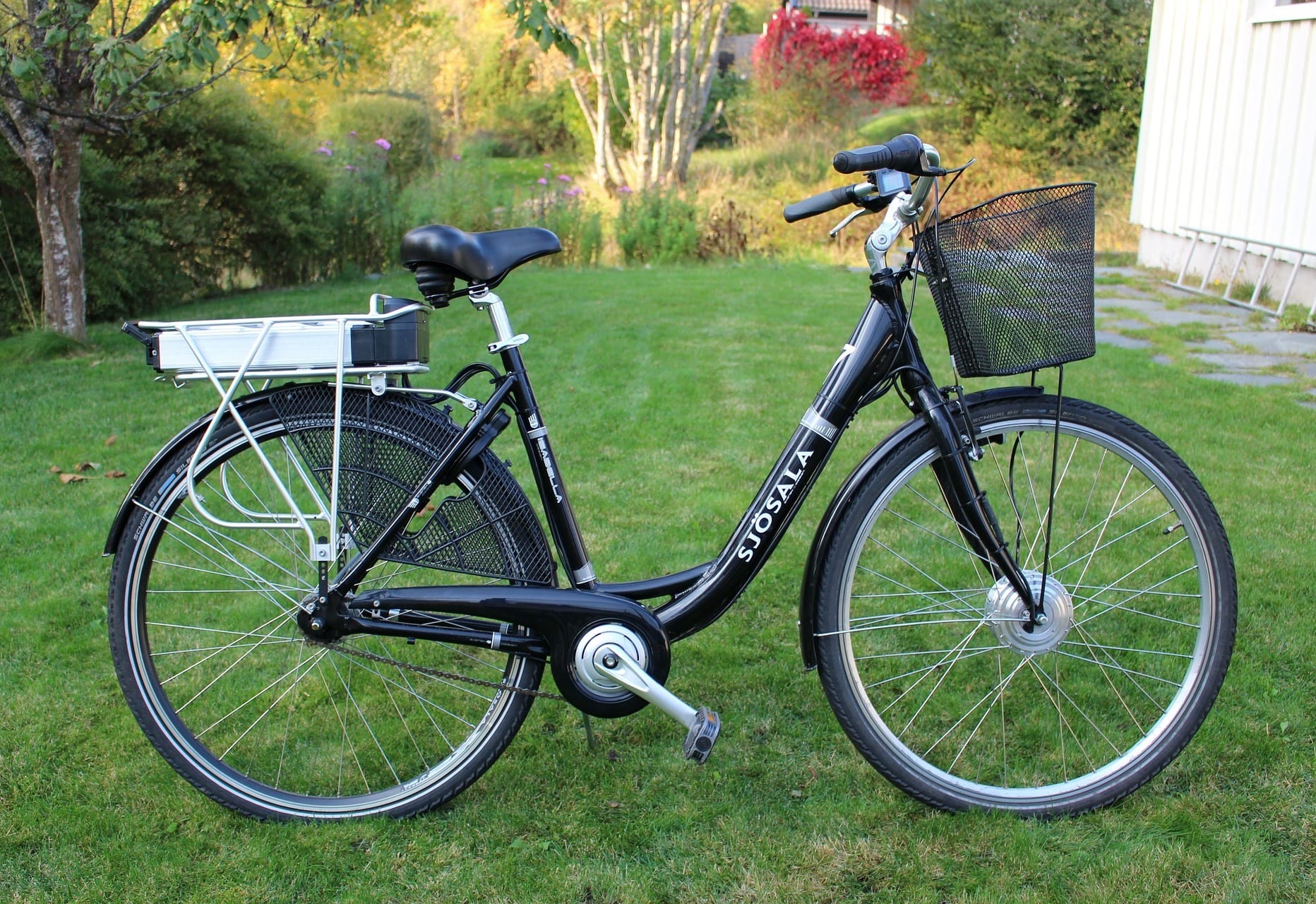
A pedelec
Pedelecs are the most common type of e-bikes, and are typically used for commuting, although speed pedelecs and electric mountain bikes have also been developed for the sports market. Demand for pedelecs is expected to grow at a CAGR of 3.2% between 2017 and 2027, with electric scooters and motorcycles growing at a slower rate. China is the largest exporter of non-pedelec e-bikes in a global market that is expected to grow at a compound annual growth rate (CAGR) of 3.1% between 2017 and 2027 and to be worth over $27 billion by 2027.
Specialist retailers are emerging for the e-bike market and championing the e-bike revolution. Elaine Wickham, manager of E-Flow Cycles in the UK, believes pedal bikes will become obsolete as e-bikes allow more people to ride for longer distances. “You may burn 100 to 200 less calories [on an e-bike], but the rider is able to ride for distances that are practical for a commute into work,” she said. For speed pedelecs and mountain bikes, she points out, the same skills for control and manoeuvrability are required, but the motor adds a boost, shrinking long distances and making a bike commute possible for more people.
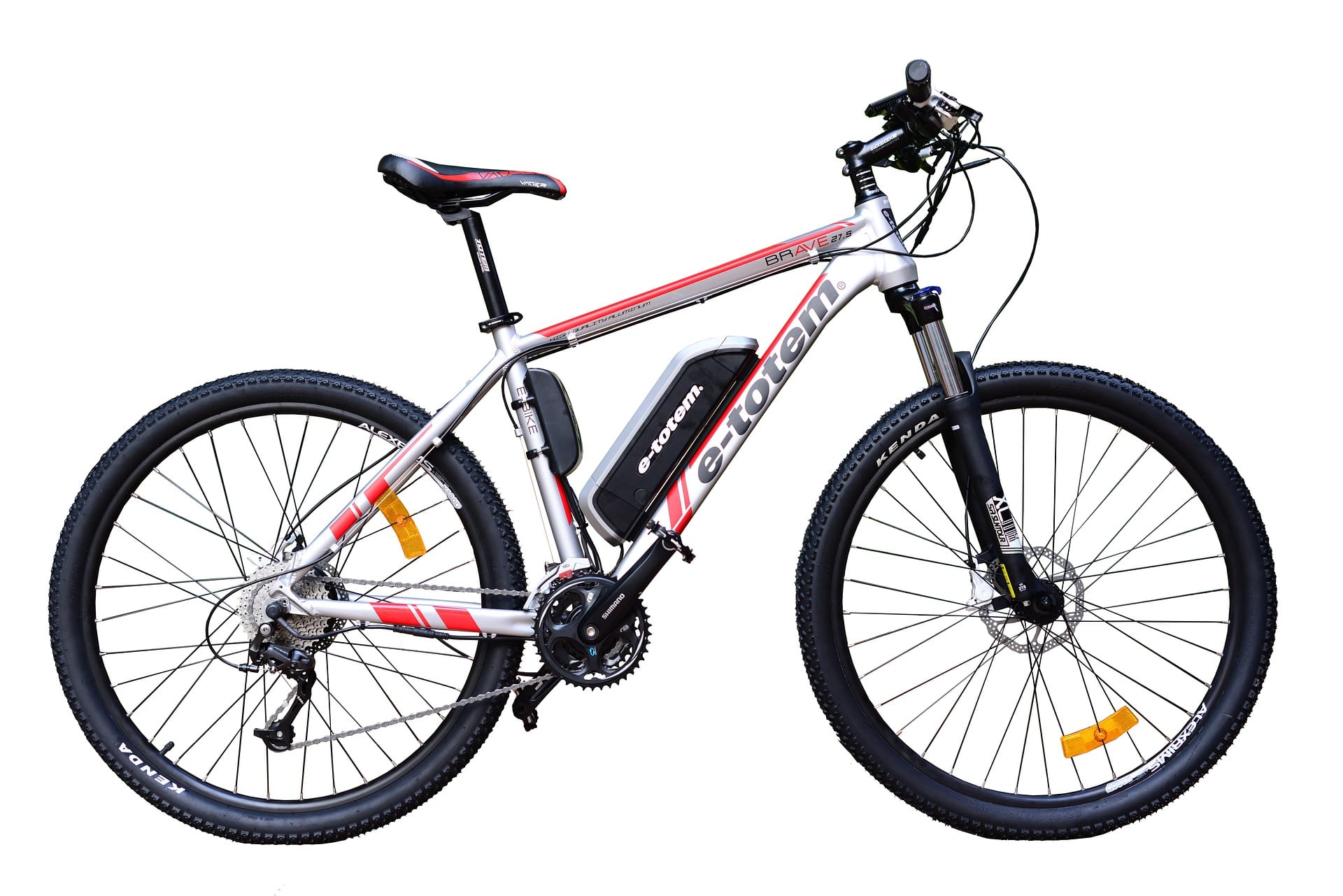
An electric mountain bike
The typical battery lasts 100,000 miles (160,000km) and can be charged using a wall plug. A full charge from a depleted battery takes about four and a half hours which Wickham believes makes charging and replacing accessible and convenient.
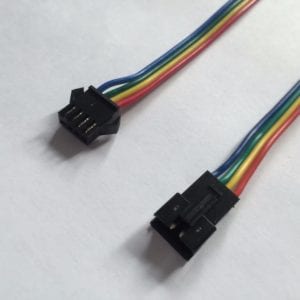
JST SM connectors
A wide array of connectors are involved in operating and charging e-bikes and pedelecs. Mainstays include JST balance connectors, which support the battery management system, QR connectors, which connect the battery to the bike and feature polarization and magnetic contacts for ease-of-use, SM connectors for small signal wires, and moisture-resistant XT90 connectors, bullet connectors, and Anderson Power Product’s Powerpole connectors for carrying currents.
Regulation Challenges
The e-bike revolution caught many cities by surprise, and governments are still developing legislation to manage safe speeds and appropriate riding locations for these turbo-charged bicycles. Across the 28 EU states, e-bikes are capped at 15.5 miles per hour (30km per hour), and it is illegal to alter the throttle to increase the speed for e-bikes ridden on roads.

Franky Vanlerberghe, CEO, A&C Solutions
The UK government has defined Electric Assisted Pedal Cycles (EAPCs) as having pedals and a 250W maximum motor and allows them to be ridden on cycle paths and any roads or areas where pedal bicycles are allowed.
Franky Vanlerberghe, CEO, A&C Solutions, said that the pedelec is very popular with commuters In Belgium. The Netherlands, famous for its flat terrain and love of cycling, has many bike-only cities, and in Copenhagen it is particularly easy to rent a bike and travel around the city. The biggest challenge, he said, is making the roads suitable to cope with so many cyclists.
In the US, the National Highway Traffic Safety Association considers low-speed e-bikes (≤20mph) to be standard bicycles, which must adhere to the standards for bicycles. Higher-speed e-bikes, however, currently fall into a gray area, with individual states making their own regulations. Some states have made the decision to ban them from sidewalks and bike trails and require e-bikes to operate only on roads.
Design Influences
As the market evolves, so does the design of the pedelec. Daily commuters want lightweight bicycles that can be easily lifted on and off public transport. They also appreciate seeing various data on a digital display, ranging from data from front and rear lights as well as from sensors measuring pace, distance, and heart rate.
The many sensors, the motor, and the battery used in e-bikes require more cables and connectors, yet they cannot add to the bulk and weight of the end product.
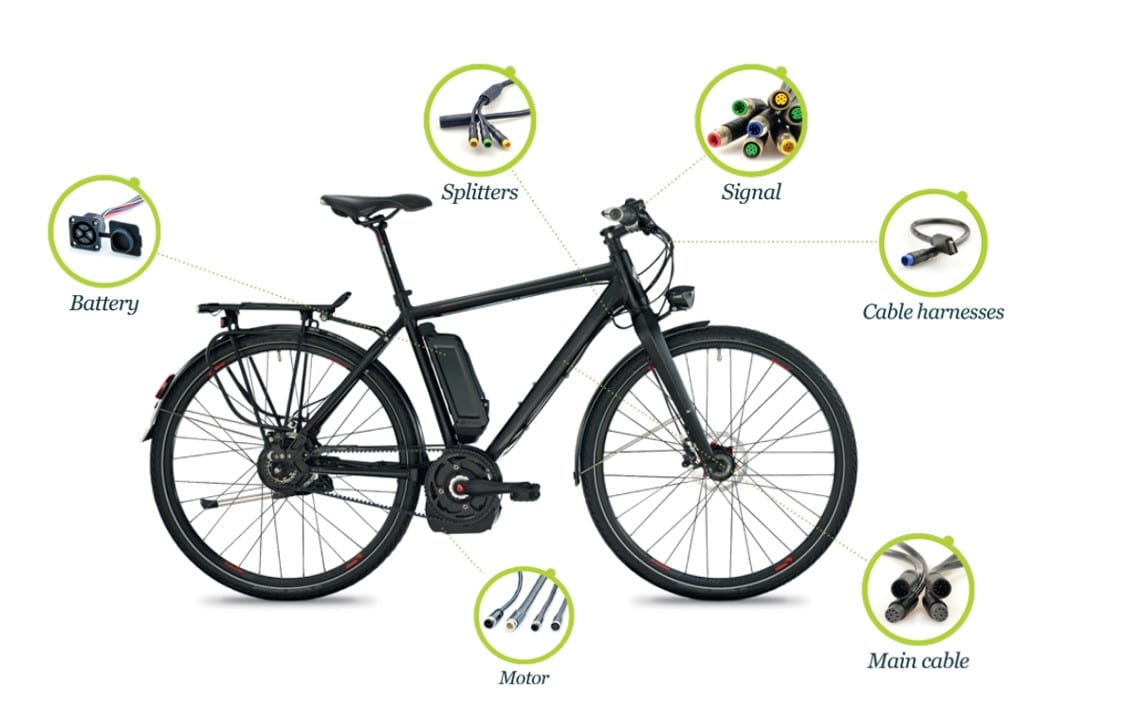
Positions of connectors used on an e-bike (Image courtesy of A&C Solutions)
A&C Solutions is a distributor and design solution company based in Belgium. It exclusively distributes e-mobility connectors from the Chinese manufacturer Higo in Europe. Owner Franky Vanlerberghe said that several factors influence the choice of connector in an e-bike. “Data and power transfer from the battery to the motor are the main concerns,” he said. “Bigger wires and cables are needed to handle the current, but for data transfer, customers do not want to see them; they want compact, watertight connectors that are easy to handle and easy to identify.”
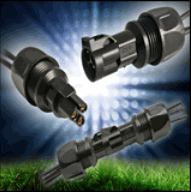
Anderson Power Product’s Powerpole® miniature connectors.
The cables and connectors are typically integrated into the frame of the bike, so they have to be very small. “We are more or less at the limits of the physical possibilities of current and size combination,” said Vanlerberghe.
It is also important that the connectors are watertight since bicycle frames are exposed to the elements. Even if they’re located within the frame, connectors could still be exposed to water during washdowns or other cleaning processes. Additionally, the interconnections have to be secure so they don’t unintentionally dislodge due to shock or vibrations during use or while transporting or cleaning.
A&C Solutions works with both Higo and their customers to develop new connectors or change the design of existing ones. According to Vanlerberghe, a prototype can be built and tested and go from design to production in three months.
Material Choices
Although many connectors employ PVC, A&C Solutions promotes the use of thermoplastic polyurethane (TPU), which it describes as a more sustainable material that is approximately 15 to 20% lighter than PVC. This benefit, plus the fact that TPU requires a different set of tools and machines than PVC, typically makes these connectors more expensive than the leading alternative.
A&C Solutions offers the Higo Mini F Series data connector, which it manufactures with TPU, at the same price as the PVC version to promote its use to customers. As the quantities increase, the price of production will reduce to make the TPU offering comparable, but at the moment, said Vanlerberghe, A&C Solutions is absorbing the price difference for the sake of promoting the “greener” material.
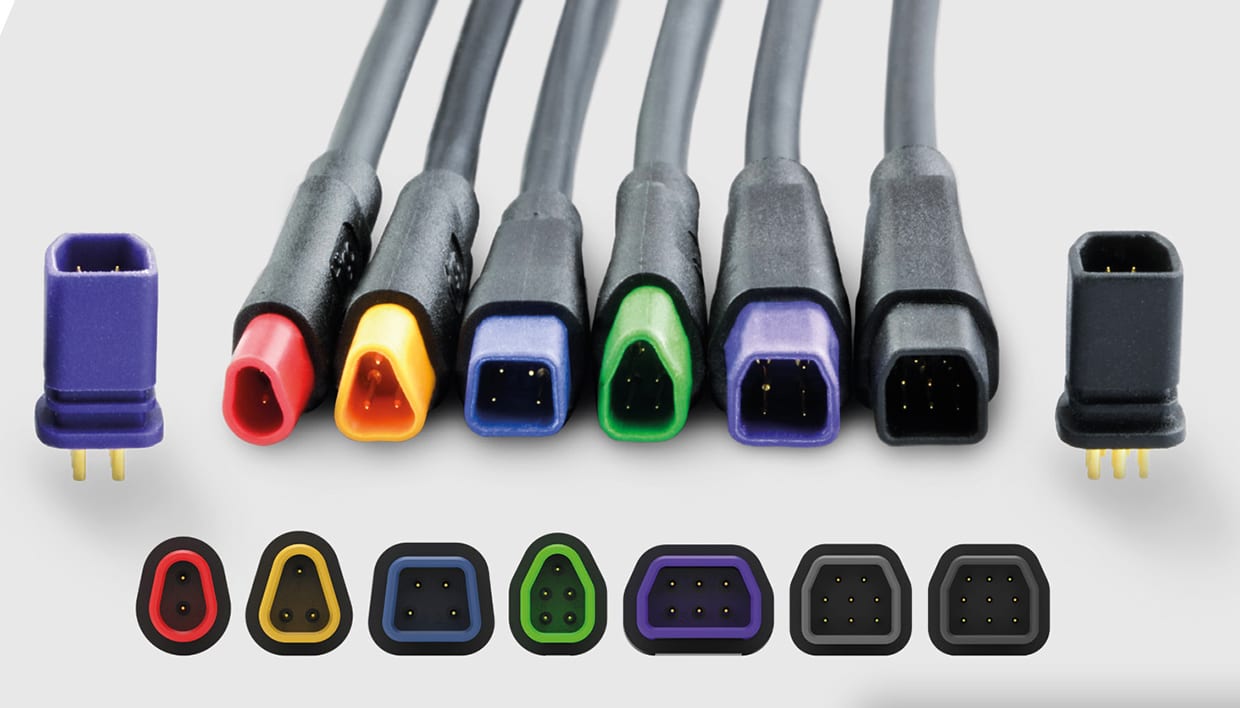
Figure 2: The Higo Mini F connector range
The Higo Mini F Series is currently available in seven designs with two to nine poles and is especially designed to enable more data in small spaces. Diameters range from 6.3mm to 9.0mm for the nine-pole option, and they also have features such as heat grips.
The market requested that signal connectors should not be interchangeable, said Vanlerberghe, so each pole size has a different shape. As a result, it is now impossible to connect a three-pole connector to a two-pole model, which was possible before, despite the introduction of color-coding.
Battery connectors and motor connectors can also be manufactured from TPU, but there has not been sufficient demand from customers to justify the additional costs.
Resilient Connectors
Customers also asked for an alternative to magnetic connectors, and in response, A&C produced the Z624 connector. Magnetic connectors are easy to connect in the right position on or in a frame but they are not particularly resistant to vibration and can easily dislodge.
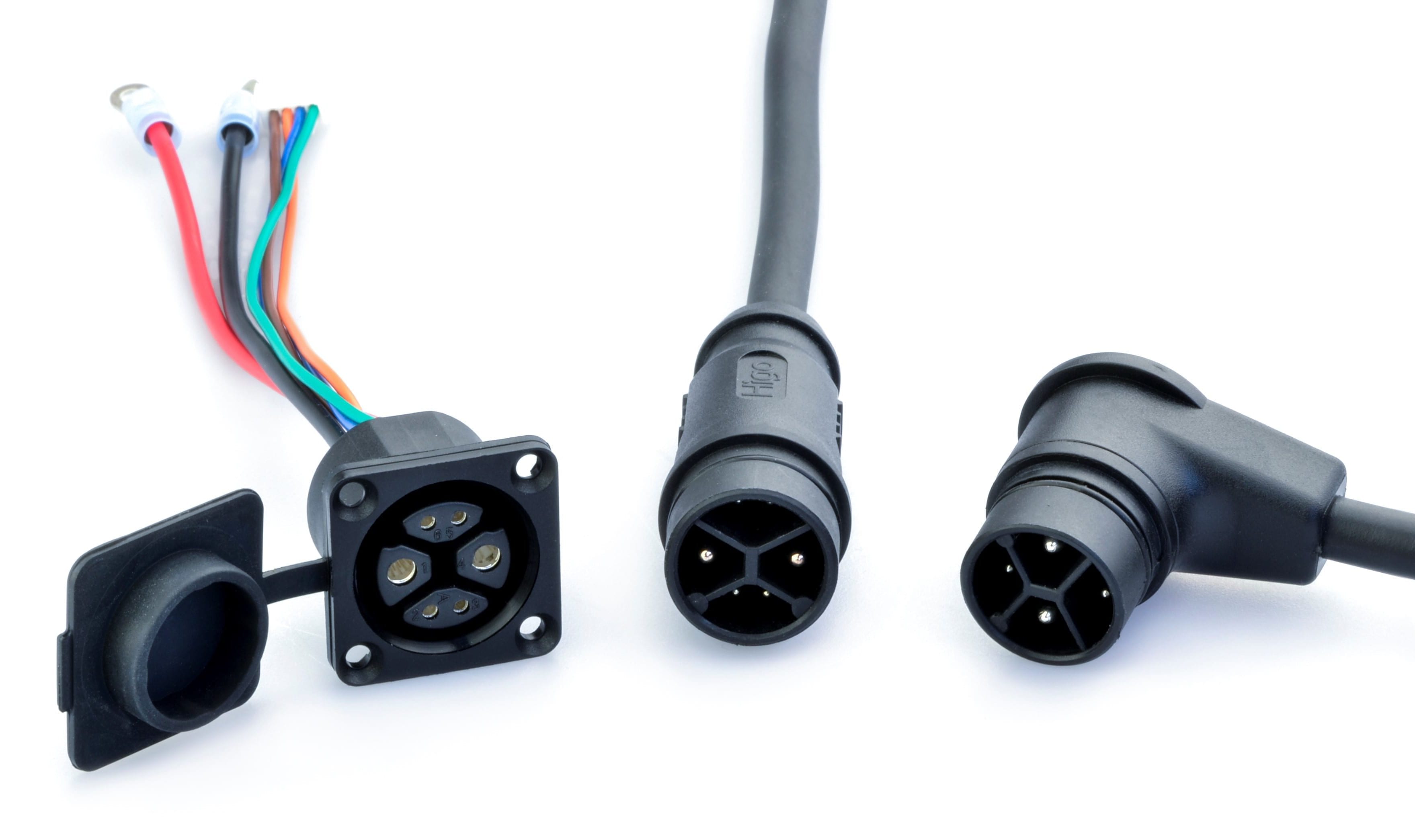
Battery connectors for e-bikes (Image courtesy of A&C Solutions)
The Z624 connector offers nearly twice the power as industry-standard 25A connectors with the same dimensions. The coded connector has six-poles — two 45A power contacts designed for 4mm2 wire and four 2A signal contacts designed for 0.14mm2 wire — and is rated for 36V.
The company also provides a three-pole, 45A power connector, the L315, which has a diameter of just 15mm and is designed to prevent interference between power and signal contacts at peak motor usage.
Increased Current
Another recent evolution in e-bike design is the increased current handling expected of the motor and battery connectors, which has ballooned from typical requirements of 10 to 15A to 40 to 60A. To keep pace with higher power demands, designers are using bigger connectors, often in the 20mm diameter range, capable of handling 40 to 45A current from the motor to the battery. Looking ahead, A&C is also already “working on 60A connectors,” said Vanlerberghe.
High interest in electric bikes is driving innovation in connector products for this unique market. What comes next? According to industry experts, the spotlight is expanding to include another electrically assisted human-powered product: scooters.
Interested in a specific market? Click a market below for current articles and news.
Automotive, Consumer, Industrial, Medical, Mil/Aero, Datacom/Telecom, and Transportation












